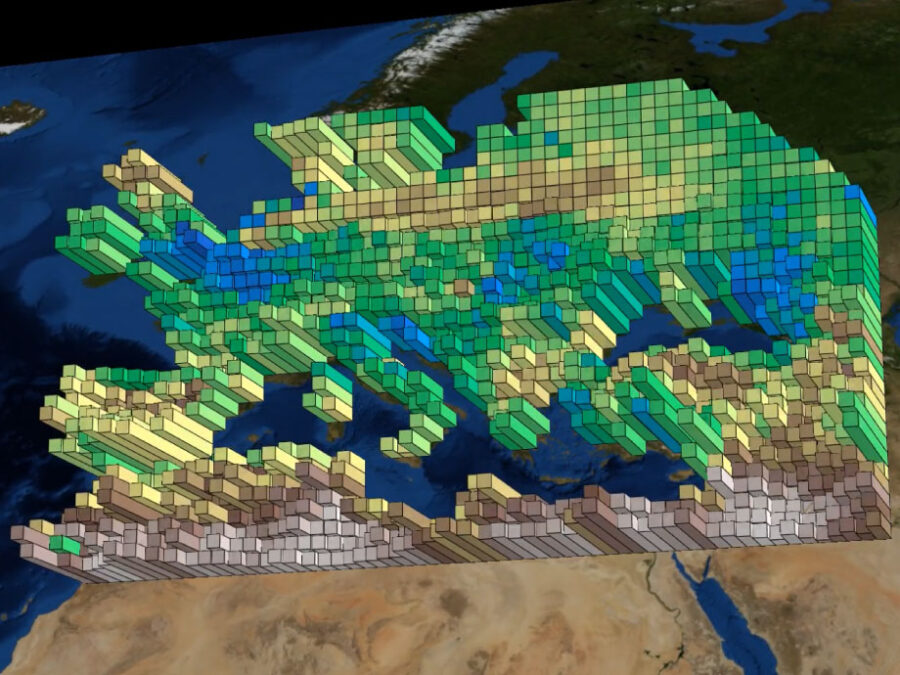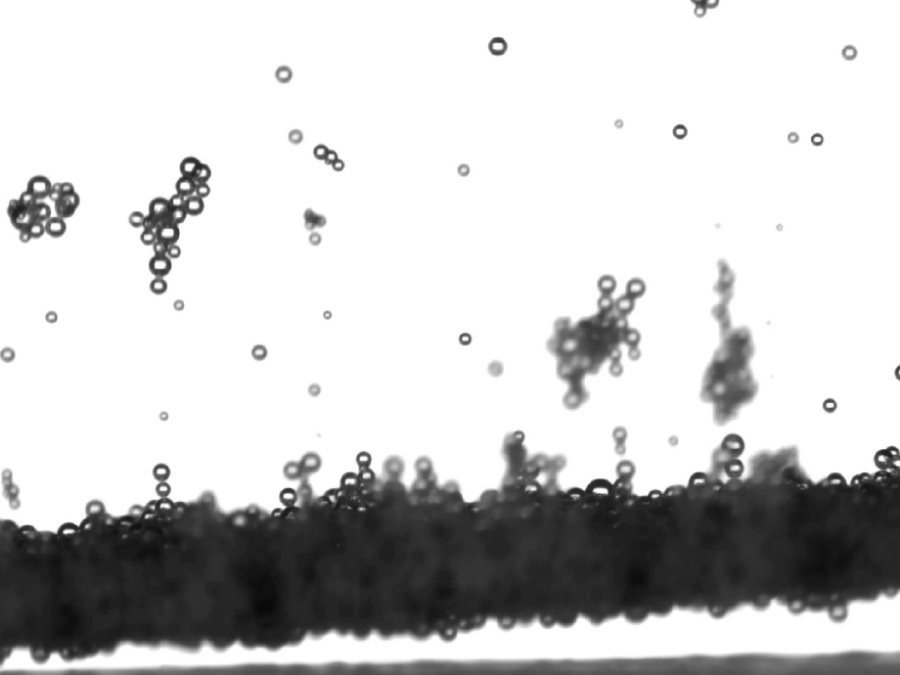Collaborations — Completed

EarthWatch
Earth-Watch introduces a Python package that visualizes spatiotemporal netCDF data on world maps by generating dynamic videos with PyVista. Designed to enhance the understanding and presentation of geospatial datasets over time, the tool allows users to overlay multiple observations, enabling comparative analyses and revealing correlations between different datasets. Additionally, it facilitates effective communication and presentations. By […]

Polarity-JaM
Cell polarity involves the asymmetric distribution of cellular components, cell shape, and contacts with neighboring cells. Gradients and mechanical forces bias cell polarity, coordinated by communication between adjacent cells. Advances in fluorescence microscopy and deep learning for image segmentation have expanded our understanding of cell polarity in health and disease. Polarity-JaM is an open-source package […]

Predicting Perovskite Thin-Film Photovoltaic Performance from Photoluminescence Videos
Photovoltaics are a key technology to decarbonize the generation of energy. While perovskite thin-films are a promising option to build powerful next generation photovoltaics demonstrating high power conversion efficiencies, their manufacturing process remains unstable. We build a model that directly predicts the solar cell performance based on a video capturing the perovskite layer formation prior […]

Single hit detection in single particle imaging with XFELs
Single particle imaging with x-ray-free electron lasers enables unique insights into the inner structure of nanometer-sized biological particles such as viruses. In order to reconstruct their 3D composition, a large number of 2D diffraction patterns must be acquired. AI-based isolation of single hits from among the hundreds of thousands of acquisitions made throughout the course […]

Segmenting cell membranes in cryoET data
In this project we develop semantic segmentation methods for accurate delineation of cell membranes in cryoET data. Not only do these segmentations enable the analysis of the spatial configuration of membranes, for example in chloroplasts, they also facilitate downstream analysis like determining the distribution of membrane proteins on their surface.

Optimizing electrode geometry and surface for hydrogen production
Electrolysis of water into oxygen and hydrogen is a cornerstone of modern energy storage, electric mobility and the transition towards a net-zero-emissions industry. Maximizing the efficiency of this technology is key to its economically viable wide scale adoption. One approach to both reduce the costs and improve the overall efficiency is to enhance the bubble […]

Extracting clinically relevant parameters from real-time MRI images of fontan hearts
Obtaining accurate segmentations of the heart in real-time MRI allows a more realistic view on clinically relevant parameters, such as the stroke volume. Cardiac real-time MRI can assess diastolic filling under breath maneuvers or other cardiac load situations which potentially enhances diagnostics other than CINE breath hold cardiac MRI. Real-time MRI allows rapid acquisitions during […]

Paving the way for future mineral processing and recycling technologies through large-scale analysis of particulate samples
Understanding and quantifying the exact composition of mineral samples paves the way towards advanced methodologies that not only increase the effectiveness of ore processing but also enable future recycling technologies. To this end, samples consisting of ground particles embedded into an epoxy matrix are imaged with computed tomography (CT) at micrometer resolution. Due to the […]

Understanding lung diseases and optimizing their treatment
Understanding the distribution of nanoparticles after inhalation can lead to the discovery of novel, more effective drug delivering techniques. To this end we develop AI-based methods for semantic segmentation of the airways in non-dissected whole murine lungs, imaged with light sheet fluorescence microscopy. The analysis of airway properties in diseased lungs will furthermore shed light […]